What is an Electrical Conductor?
An electrical conductor is a type of material that allows the flow of electric current. Electric current is nothing but the rate of flow of charges with respect to time. For the flow of these charges or what we usually say, for the electric current to flow, a medium is required. Anything that serves as a medium for the fulfillment of this purpose is known as an Electrical Conductor.
For the electric current to flow, free electrons are required. The higher the number of free electrons in the conducting material better will be the flow of current and it will be more effective as a conductor.
Concept of free electrons
Free electrons are the electrons present in a material that is loosely attached to the nucleus. Therefore when an external electromotive force or a time-varying magnetic field is applied, these electrons are detached from the nucleus and cause the electric current to flow.
Every atom of a given material has a nucleus and attached to it are electrons. Based on their relative position from the nucleus, they are placed into two bands – Valence Band Electrons and Conduction Band Electrons.
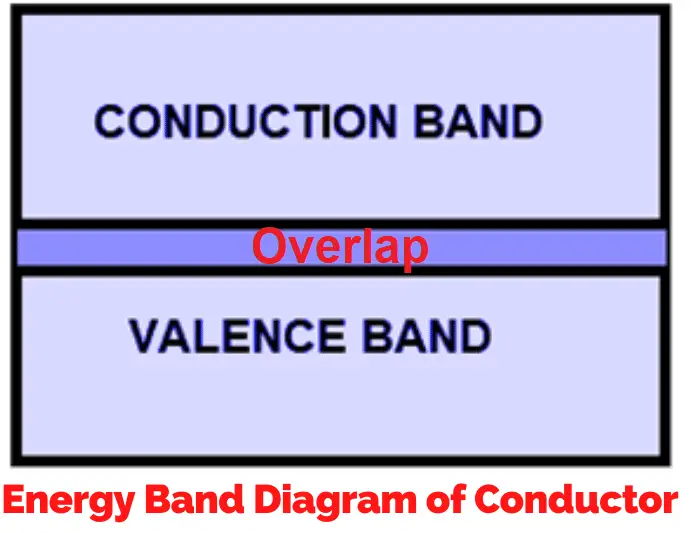
Valence band electrons are closely attached to the nucleus. These electrons don’t participate in the conduction process. For detaching them, an extra amount of energy is required.
Conduction band electrons on the other hand are the electrons that are not strongly attached to the nucleus and are readily available for conduction when an external emf or magnetic field is available.
In an electrical conductor, the conduction band and valance band almost overlap.
An ideal conductor
An ideal conductor is one that has zero resistance and infinite conductance. It will cause no voltage drop when an electric current passes through it. At the atomic level, an ideal conductor is one in which no energy is required for moving the electrons from the valence band to the conduction band.
However, in the practical world, every material has a certain amount of inherent resistance that depends on temperature and other physical conditions. When subjected to an electro-motive force, it causes the flow of current through it but with a certain amount of voltage drop across its own resistance.
Even voltage sources like batteries also have an internal resistance across their terminals that causes a certain voltage drop.
Properties of Electrical Conductor
The electrical conductors have the following properties.
- A conductor always permits the movement of free electrons or ions.
- A conductor permits the movement of free electrons because the electric field inside a conductor is zero.
- The positive and negative charges inside a conductor are equal and they get canceled. Thus, we can say the charge density inside a conductor is zero.
- There are no free electrons or charges inside the conductor. Therefore, only free charges can exist on the surface of a conductor.
- The electric field always acts perpendicular to the surface of the conductor.
Types of conducting materials
Electrical conductors are of three types: Good Conductors, Bad Conductors or Insulators, and Semi-conductors. This categorization is made on the basis of their ability to conduct electricity. Let’s understand them in brief.
Good Conductors / Conductors
As the name says, good conductors are materials that have good conductivity and are used in various electrical systems for the conduction of electricity. All metallic elements are good conductors of electricity and are normally referred to as conductors. Examples: Iron, Copper, Silver, Nickel, etc. These materials require very little energy to transfer electrons from the valence band to the conduction band.
Silver is the best electrical conductor of electricity of all. But these are costly and not suitable for use in electrical machines and processes. Thus, copper is used mostly in electrical machines for that purpose as it gives the desired result and is ductile and malleable. Apart from that, Aluminum is also used in places where weight is a concern like in Transmission lines.
Bad Conductors or Insulators
Bad electrical conductors are the ones that have little to no free electrons and require a huge amount of energy to bring electrons from the valence band to the conduction band. This energy is given by the potential difference which can range from a few kilovolts to several megavolts. That’s why these aren’t used for conduction purposes.
These materials are used as insulating materials to ensure the safe handling of conducting material and to provide isolation between the two circuit elements or the circuit and the external environment. This ensures the safety of the operation.
Examples: Plastic materials, PVC, Bakelite, etc. Bakelite is used for making electrical switches.
Electrical Conductors form electrovalent bonds while insulators form covalent bonds.
Semiconductors
Semiconductors as the name says, are materials that are partially conducting in nature. They show the properties of both a conductor and a non-conductor depending on various physical conditions like temperature, emf applied, etc. Examples: Silicon, Germanium, Gallium Arsenide, etc.
Semiconductors are widely used in electronic circuits which are ideal for fast-switching processes. Elements like transistors and diodes are made up of semiconducting materials.
How does a conductor conduct electricity?
As we discussed above, conductors have a huge number of free electrons available. When a potential difference is applied across two points in a conductor, it causes these electrons to gain the required amount of energy to move from the low potential to the higher potential in the conduction band. The electrons begin to move from one atom to another by gaining energy.
As an enormous amount of electrons is present (called an electron cloud), the movement of electrons doesn’t happen in a straight line. These electrons perform to-and-fro motion where they collide with other atoms or electrons. The velocity with which these electrons move is known as drift velocity. Drift velocity is constant for a given material and a given electric field intensity.
Drift velocity
The drift velocity of an electron is the average velocity with which an electron is drifting forward. As there are millions of electrons present, an electric field causes an electron to collide with another electron while moving. Therefore, the velocity of this electron keeps on changing at every point. An average of this will give the drift velocity of the electron.

Therefore, drift velocity is given as

Where n is the number of collisions. Now we know Newtonian mechanics

Where ‘u’ is the initial velocity and a is the acceleration. Now between two successive collisions, the electron is under the influence of only the electric field (E) with its initial velocity being the velocity after the previous collision and t being the time elapsed since the previous collision.
Therefore,
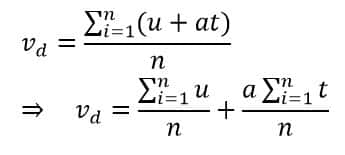
Now, the first term in the equation of the drift velocity is the average of all the initial velocities of the electron. Since there are millions and billions of electrons present and causing an electron to collide innumerable times, the sum of all the initial velocities being a vector sum equals zero.
The acceleration ‘a’ is a uniform acceleration given by

Where F is the force applied which is equal to the electric field force given by the product of the charge of an electron and the field intensity (eE). ‘me‘ is the mass of the electron.
Therefore,

Now,

Where τ is the relaxation time of the electron. It is the time between two successive collisions of the electron. So, the drift velocity in an electrical conductor is given by
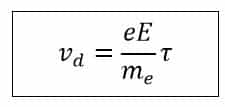
As we can see, the drift velocity is a constant term depending upon the electric field intensity and the relaxation time.
Direction of flow of electric current in a conductor
When a conductor is subjected to a potential difference, it causes an electric field to set up. The electrons flow in the direction opposite to that of the electric field whereas the electric current flows in the same direction as the current flows from point of higher potential to the point of lower potential, unlike the electrons.
The rate of flow of charge with respect to time is called electric current. Hence

Types of conductors
Ohmic conductors
These conductors follow Ohm’s law i.e, V∝ I, Examples – Iron, Copper, Silver, etc. The ohmic conductor does not produce harmonics in the electrical supply network
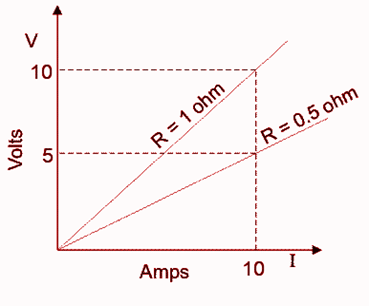
Non-Ohmic Electrical conductors
These don’t obey Ohm’s law. They don’t have a linear relationship between voltage and current. This type of character is shown by semiconductors. Examples: Diode, Transistors, LDR, etc. The non-ohmic conductors produce harmonics in the electrical power system and pollute the power supply system.
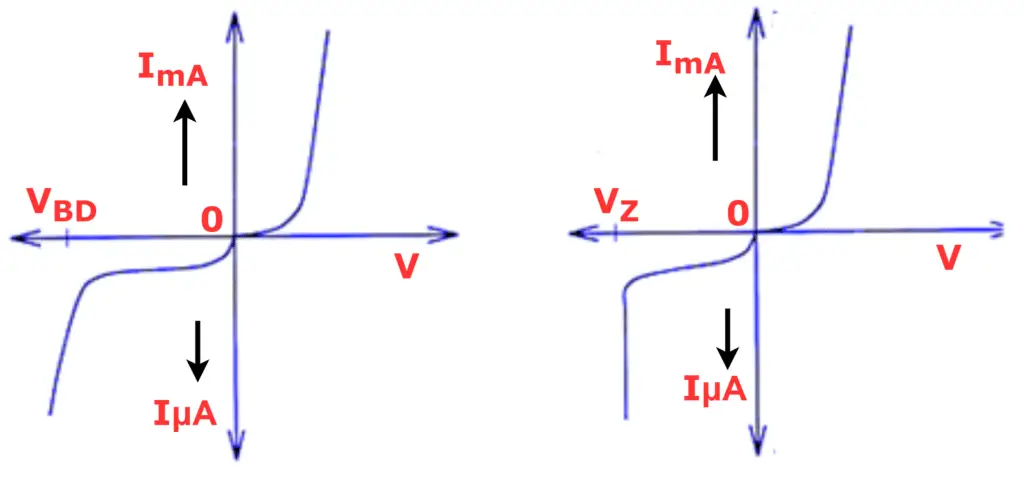
Solid electrical Conductors
Examples of solid conductors are;
- Metallic Conductor: Silver, Copper, Aluminum, Gold, etc.
- Non Metallic Conductor: Graphite
- Alloy Conductor: Brass, Bronze, etc.
Liquid Electrical Conductor
Examples of liquid conductors are;
- Metallic Conductor: Mercury
- Non Metallic Conductor: Saline Water, Acid Solution, etc.
Effect of Temperature on a Conductor
The more temperature cause more vibration in the conductor molecules. Thus, the increased vibration creates a hindrance to the flow of electrons. Thus, the conductivity decreased because of more opposition in the path of the flow of the electrons.
Though, the increased temperature breaks the molecules of the conductor and releases some electrons. But the increased electrons are less in number and thus, the electrical conductivity of conductors decreases with a rise in temperature.